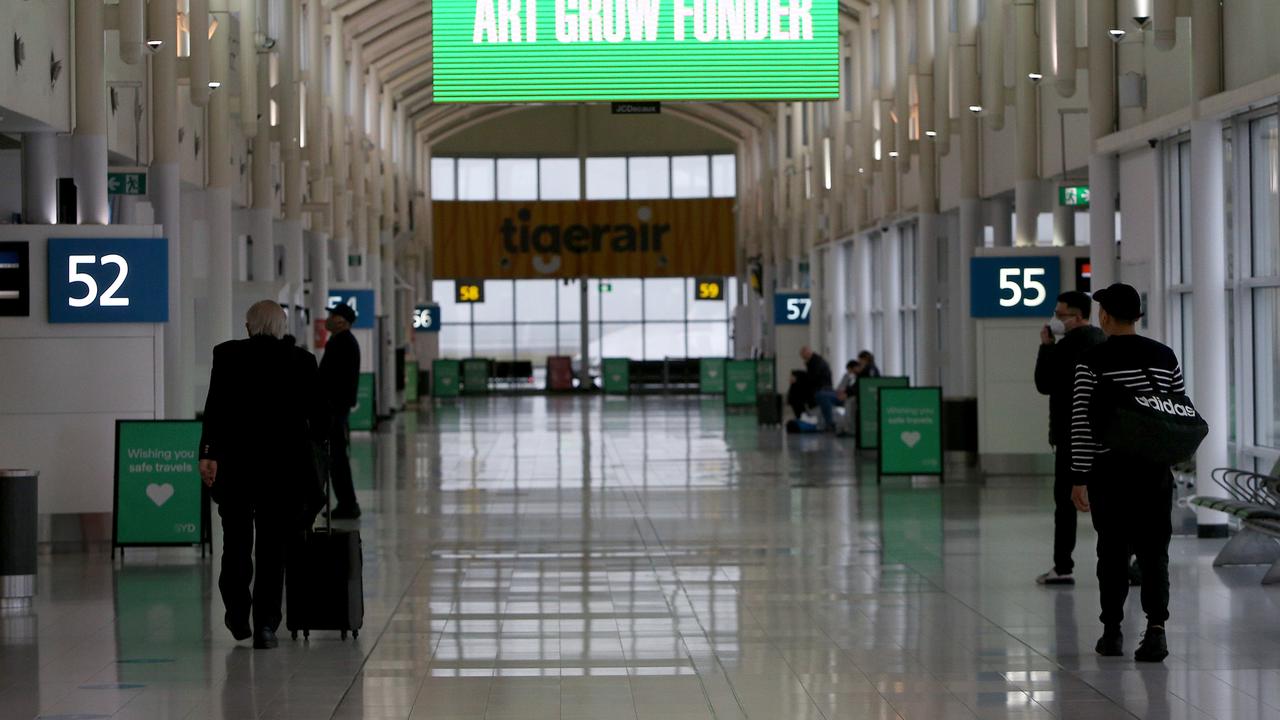Terry McCrann on the Port of Melbourne sale
THE State Government’s sale of the Port of Melbourne has turned out to be an extraordinarily good and value-creating deal, writes Terry McCrann.

Terry McCrann
Don't miss out on the headlines from Terry McCrann. Followed categories will be added to My News.
THE State Government’s sale of the Port of Melbourne has turned out to be an extraordinarily good and value-creating deal.
Most importantly, it is clearly in the — very — best interests of not just today’s and even more tomorrow’s Melburnians, but all Victorians.
And indeed, both directly and in where it points, that also of all 24 million Australians.
This is the case both in getting a better functioning port into the decades ahead and also getting top dollar — nearly 10 billion of them — from the sale of a taxpayer-owned asset, to be redirected into other Victorian (and Australian)-benefiting infrastructure.
And getting all that without screwing tomorrow’s port users — and so, screwing all Victorians and indeed all the other Australians indirectly.
Maybe, to digress, the government could quite appropriately take up Opposition leader Matthew Guy’s suggestion and redirect some of the loot into putting all the level crossings underground, abandoning the Skyrail monstrosity.
That would be good politics — something, you’d expect embattled erratic premier Daniel Andrews would grab with both hands.
But it would also be good policy. Skyrail is not only a cheap and nasty ‘today patch-up job,’ it will assuredly have to be undone in the future — much like the way our original two-lane freeways had to be expensively rebuilt.
Further, the federal government would be well advised to grab its share of the ‘good policy/good politics’ on offer, by doing two things.
First, by delivering on former treasurer Joe Hockey’s promise to tip in an extra $1.4 billion; so the $9.7 billion goes to $11.1 billion and all of it then into new infrastructure.
And secondly, by recommitting to the Hockey policy; that yes, it will continue to tip in an extra 15 per cent to the amount received by state governments from infrastructure sales provided all the money gets reinvested in new infrastructure.
Yes, that would mean — hopefully — a bigger upfront federal budget deficit.
I say hopefully, because the more existing infrastructure sold and the more new appropriate infrastructure built — and this policy would get you $11.5 billion of new for each $10 billion of old sold — the better.
But I would hope it wouldn’t be rubbish such as useless — except for bird-slaughtering — windmills and solar panels; but — real infrastructure that makes our lives better and our economy work more effectively.
And so, also work to both reduce future federal budget deficits and increase the state bottom-line surplus.
This would pick up on retiring Reserve Bank governor, Glenn Stevens’s off-brief departure advice, for the government to move to ‘good deficits,’ which saw money borrowed to build infrastructure as opposed to today’s ‘bad deficits’ of borrowing to fund welfare.
Stevens actually, more diplomatically, talked about borrowing to fund recurrent spending more generally, which includes welfare.
The core point is that we need two broad fundamentals to build a prosperous future Australia — whether or not we want to move away from the ‘population ponzi’ that has given us ‘prosperous-lite’ economic growth over the last quarter-century.
The first is a far more flexible economy, the second is more — but to stress, quality — infrastructure. And it also makes our lived experience better. For obvious instance, a good — better — transportation network not only makes the economy work better; it makes our lived experience better.
In a funny sort of way, this deal bookends Jeff Kennett’s sale of the state’s electricity assets and businesses in the early-to-mid 1990s and his subsequent commitment to CityLink and toll roads.
They were in the context of high interest and the functionality of (the buyers) loading up infrastructure businesses and their stable and dependable income flows with debt. The money generated was used to pay down state debt, not in building new infrastructure.

THE Kennett government was — justifiably — terrified of adding even more high-interest rate debt. After all, both state and country had just lost their Triple-A ratings, being downgraded twice.
Now, with interest rates so low, it makes sense to borrow and build. Arguably it makes even more sense to get someone else — the private sector buyers — to borrow, to allow the state to build, the new infrastructure.
Now you could say the government got lucky with timing, with global interest rates so low.
Not only are the big long-term investors looking for solid, stable long-term income streams — making it a sellers’ market as akin to property — but the low rates mean they can either borrow up big or put in their own equity cheaply.
This also meant the government didn’t have to ‘give away the farm’, so to speak.
The buyers have only got a 50-year lease, not the 100 years originally pondered. Further, they’ve only got state exclusivity for 15 years.
Yes, I agree with my Australian colleague Stephen Bartholomeusz, this is not as significant as it could be — a ‘smart’ owner would be able to pre-build more capacity much quicker and cheaper to keep any new ‘greenfields port’ at bay.
But who knows what the future might hold. Better that someone else could, to reverse the ‘Costner order,’ at least do so by ‘coming and then building it.’
That the clock’s ticking on this port’s exclusivity, even if just theoretically, will at least keep these buyers on their toes.
Finally I really like the buyer mix — importantly, our Future Fund and China’s big sovereign wealth fund. This works positively and creatively into so many other dynamics we need for the future.



